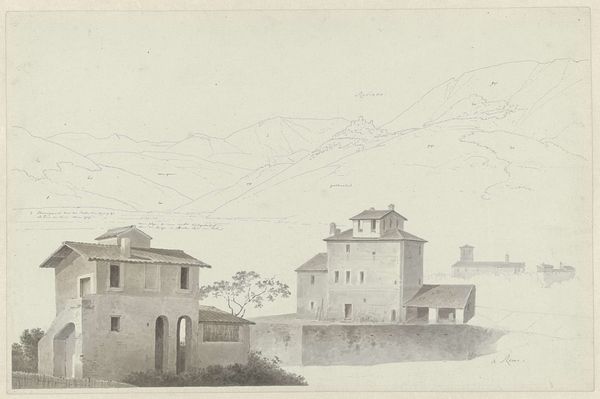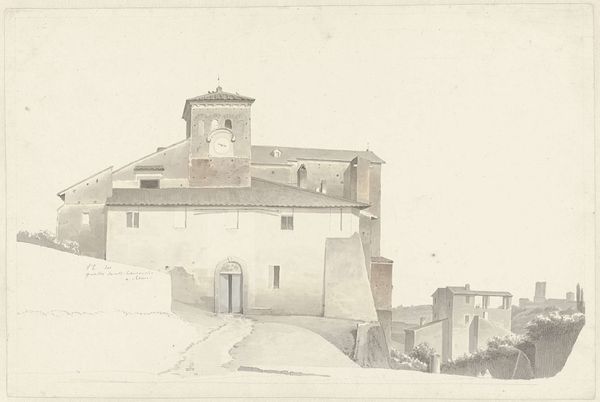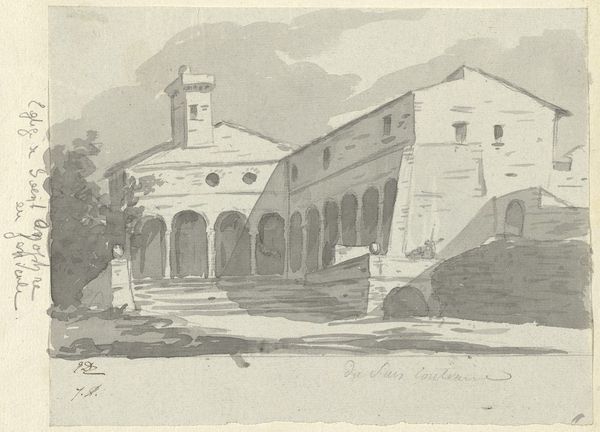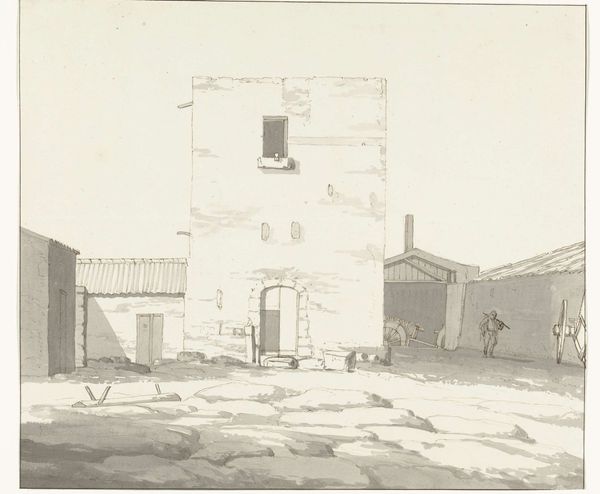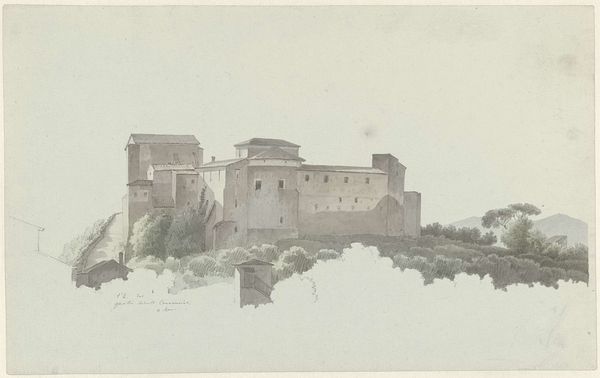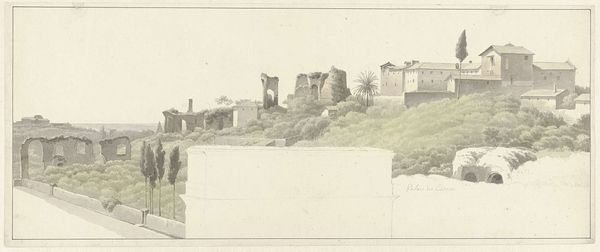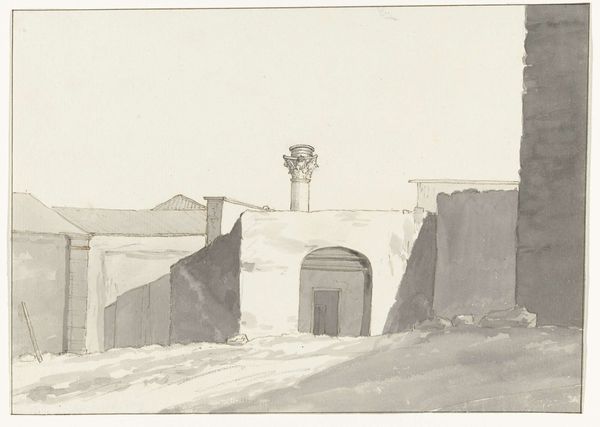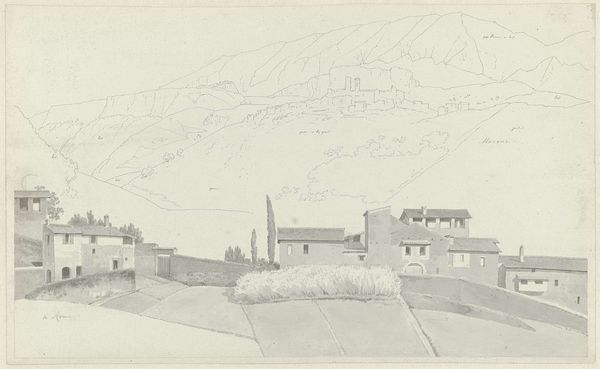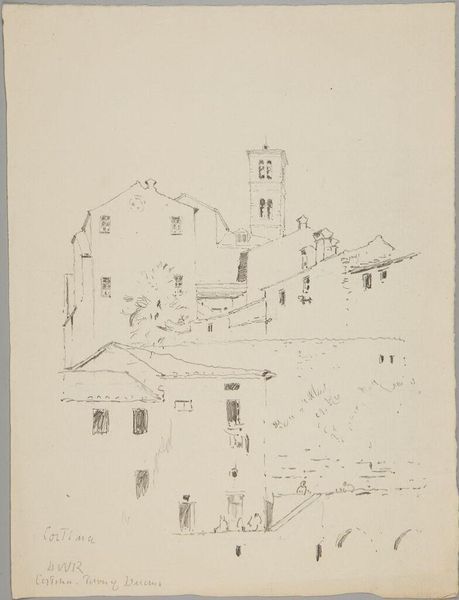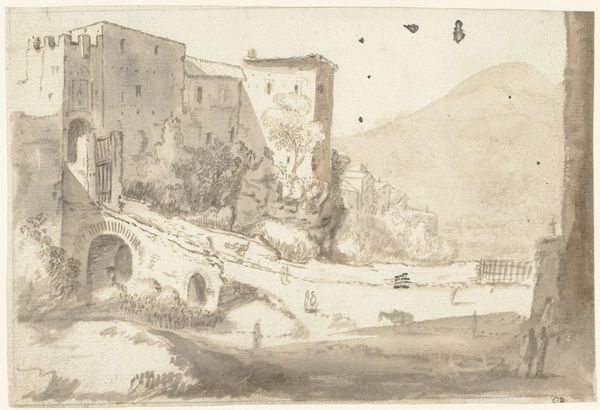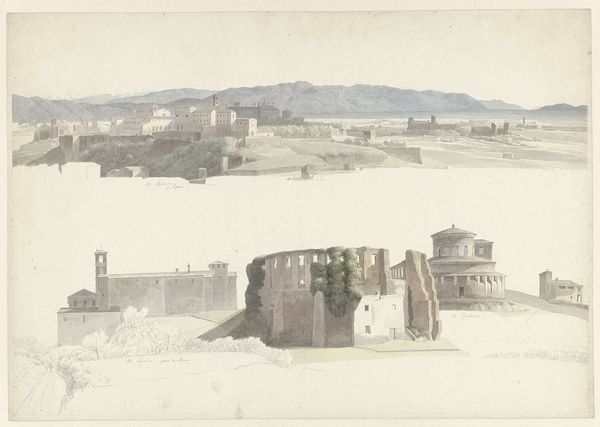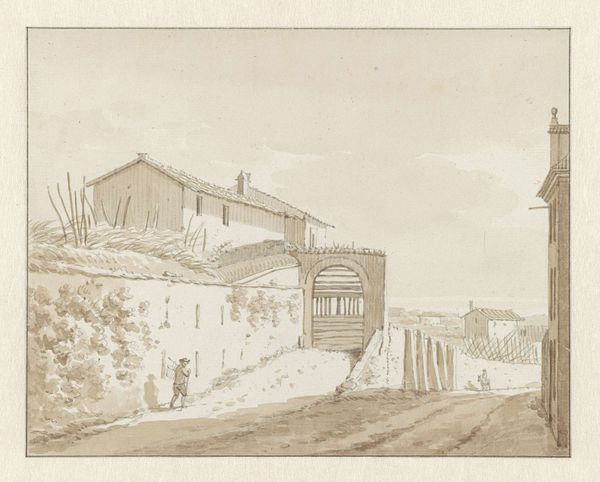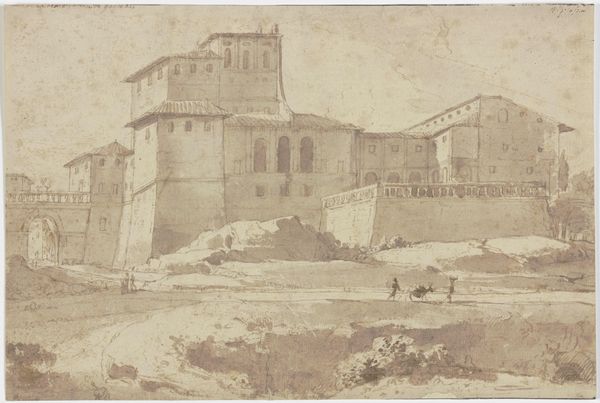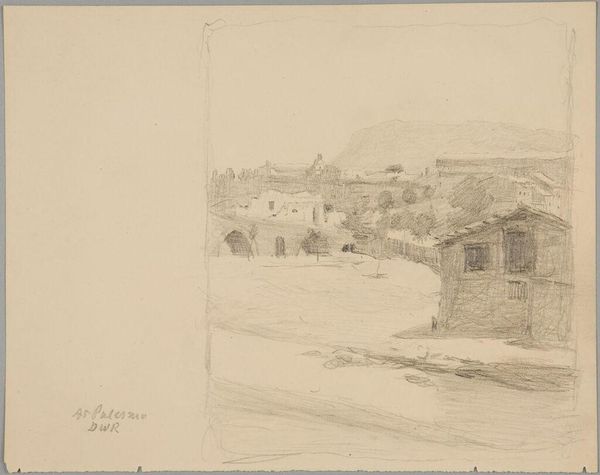
The Monastery at Vicovaro, and the Porter’s Lodge of the Villa Borghese c. 1809 - 1812
0:00
0:00
drawing, pencil, architecture
#
drawing
#
neoclacissism
#
pencil sketch
#
landscape
#
etching
#
pencil
#
architectural drawing
#
architecture
Dimensions: height 283 mm, width 440 mm
Copyright: Rijks Museum: Open Domain
Josephus Augustus Knip rendered this drawing of the Monastery at Vicovaro and the Porter’s Lodge of the Villa Borghese in pencil. The Borghese was originally an estate owned by the wealthy Borghese family in the 16th century. The image creates meaning through its depiction of the Italian landscape. The Monastery at Vicovaro, the Porter’s Lodge, and the natural setting are visual codes that represent Italian history and culture. During the 18th and 19th centuries, the Grand Tour was a popular tradition. Aristocrats and wealthy Europeans would travel to Italy to experience its art, architecture, and history, to expand their cultural knowledge. Knip catered to their interests, producing images of historical sites and picturesque views that tourists could take home as souvenirs of their travels. Understanding the social conditions that shape artistic production, such as tourism, helps us to appreciate how art reflects historical and cultural contexts. Historians can delve into travel logs, letters, and guidebooks, to better understand this image. Art is contingent on social and institutional context.
Comments
rijksmuseum about 2 years ago
⋮
Knip has here, too, combined two totally unrelated studies. The ‘background’ is formed by a summary sketch of the monastery near Vicovaro, a town just northeast of Rome. Over this he drew a view of the porter’s lodge of the Villa Borghese in Rome, a structure, no longer extant, whose core consisted of a medieval tower.
Join the conversation
Join millions of artists and users on Artera today and experience the ultimate creative platform.
